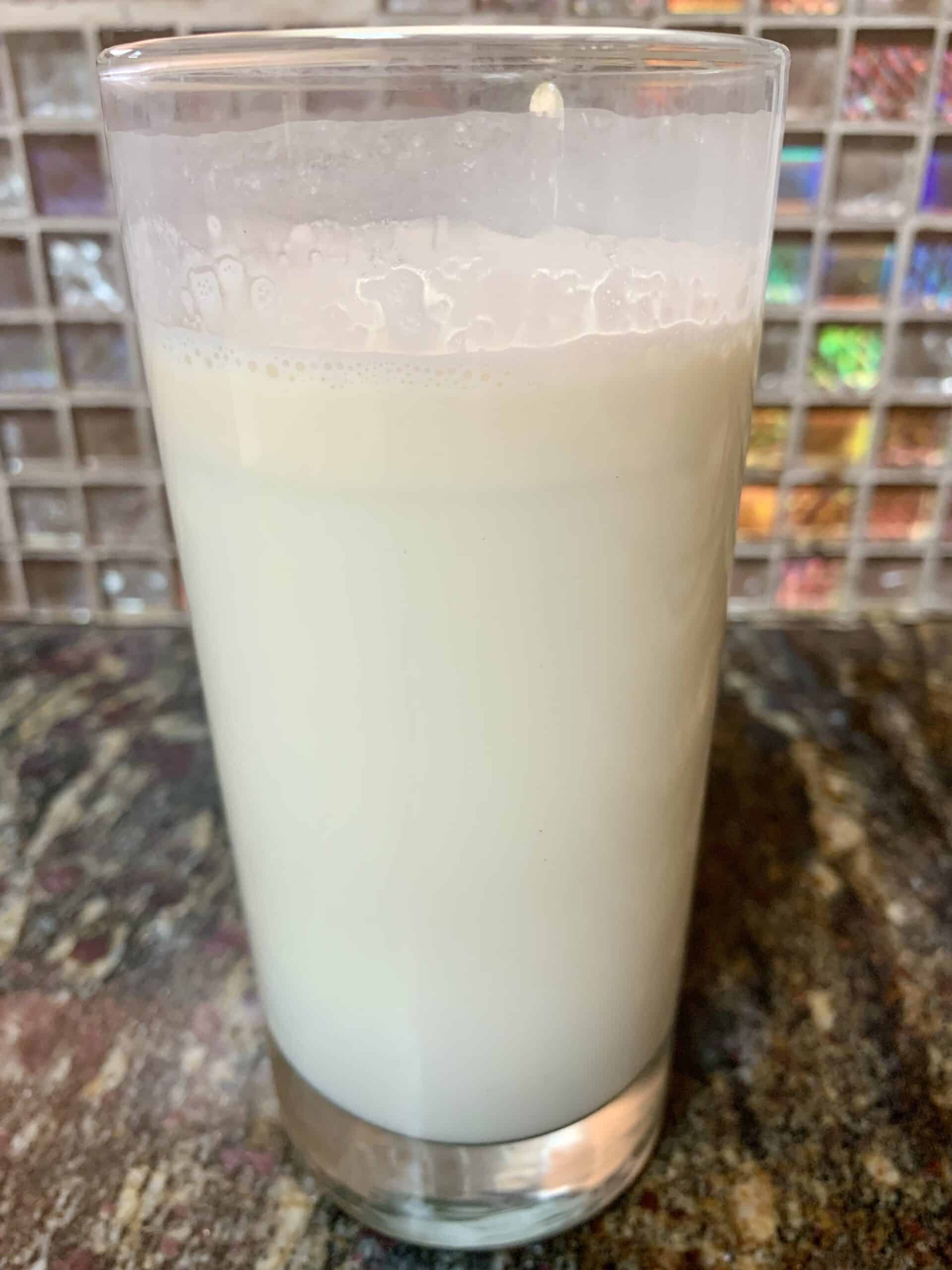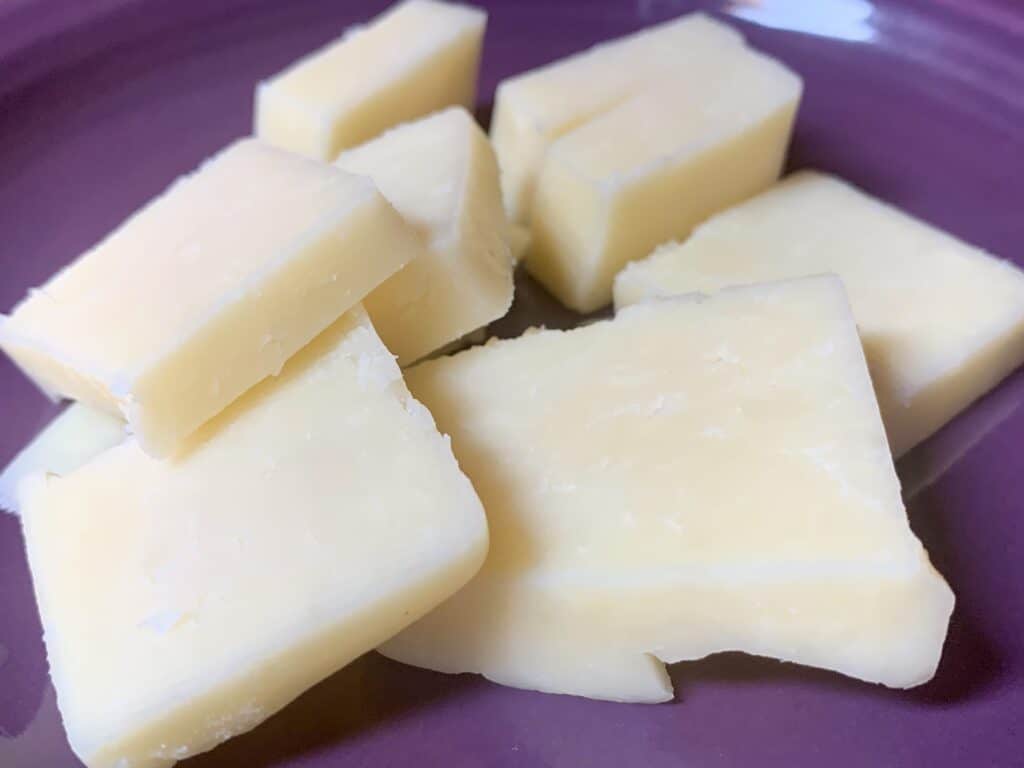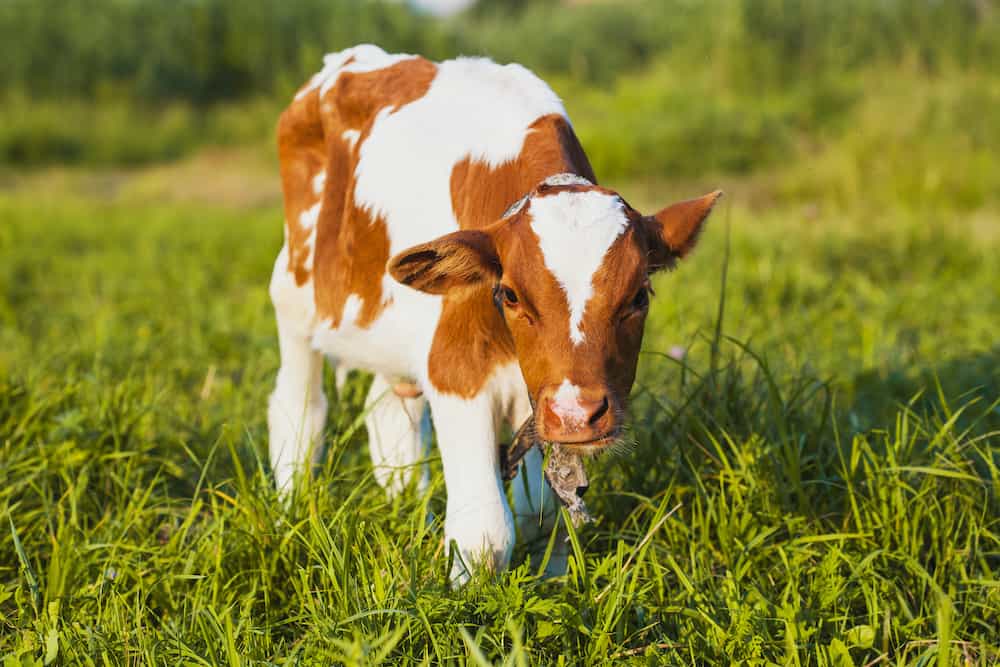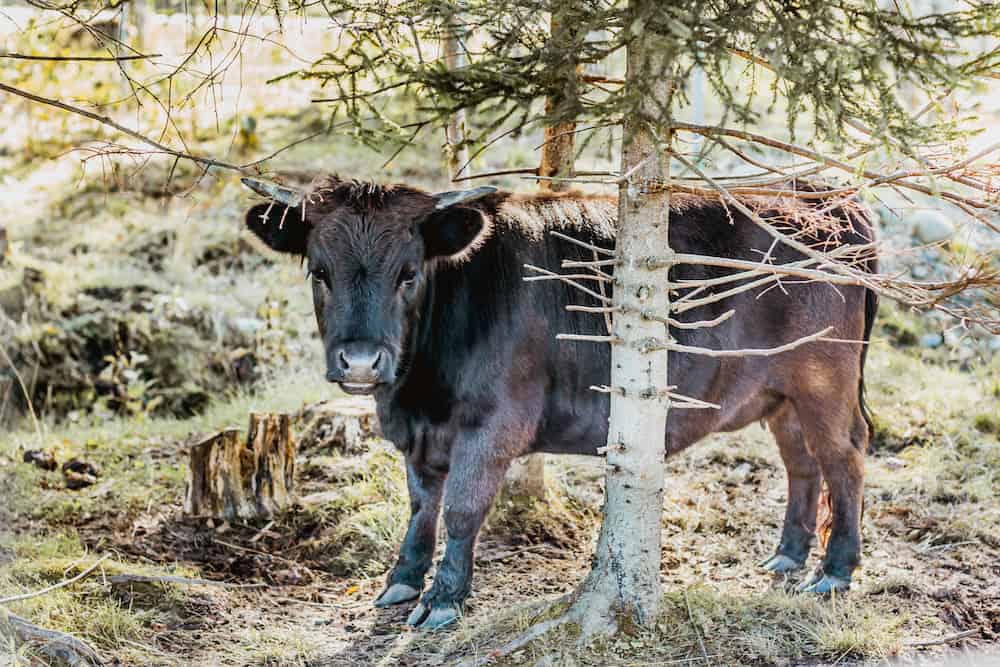Mini milking cows have boomed in popularity thanks to their adaptability to smaller urban farms and their significant output of delicious milk. For farmers who have less space for housing their cattle or who might have limited space for pasturing, mini cows could be a far better alternative.
However, these breeds aren’t recommended for everyone, especially if you have specific expectations for your cattle.
Before deciding if you want to invest in them, I’ll explain what a mini milking cow can bring to your farm as well as the essential tips for keeping them healthy and happy over their lifetime.
What Beginners Need to Know
There’s a lot more involved than “just” owning a cow and getting milk. To start a small dairy farm on a homestead, you must have a plan to breed the cows so they can produce milk.
To keep cows producing milk, they need to have a baby calf every year. When a cow has a calf, it starts making milk. After the calf is born, the cow will keep producing milk for about a year. Then, the cow needs to have another calf to start making milk again. This means, for a cow to keep giving milk, it needs to become pregnant and have a baby calf each year.
Therefore, you’ll need to raise or rent a bull to breed with the cow(s) or use artificial insemination. Access to a large animal veterinarian may also be required.
It’s important to know that cows will need plenty of space, access to plants and grasses for grazing, fresh water, and shelter. You’ll also need manual or mechanical milking equipment.
How to Classify a Mini Milking Cow
Much like their name suggests, it’s easy to assume that a mini cow is any animal that is substantially smaller than a traditional size cow.
Although that is correct, there are specific parameters these animals fall within to be classified as miniature. You’ll find three different categories within the miniature category.
These have a significant impact on the mini milking cows milk production, the amount of space they need, and how much you need to feed them.
- Midsize Miniature: 42 to 48 inches
- Standard Miniature: 36 to 42 inches
- Micro-Miniature: 36 inches and less
On average, you’ll find that miniature cows are up to a third of the size of a standard cow. This might make them seem more appealing to farm owners who don’t have a lot of space to use to their advantage. Choosing miniature cattle breeds for a small farm is ideal.
How Much Milk Does a Miniature Cow Produce?
One of the most pressing questions about miniature dairy cows is: How much milk do they produce?
Due to their significantly smaller size, you’ll find that they don’t produce as much milk as a standard cow. However, if your cattle are bred specifically to meet the needs of your family, you can benefit significantly from these smaller animals.
Considering the average standard size milk cow produces up to 10 gallons per day, it can be nearly impossible for a single family to use all of the milk without some of it being wasted.
A better alternative is to opt for a mini cow that will produce up to one and a half gallons of milk daily. This is a much more manageable amount. You’ll find that this is more than enough to make a substantial amount of milk. You will still have enough product left over to make your butter or cheese every week.
Some families may find that they will still have some available to give to family or friends to prevent it from being wasted.
Fortunately, the milk produced by mini cows is just as delicious as the high-quality milk made from standard size Jersey cows, with around 5% of butterfat content.
It’s a fantastic ingredient for several products. These include yogurt, ice cream, mozzarella cheese, and butter.

What Do Mini Cows Eat?
You can expect your miniature cows to eat a fraction of what standard cattle would consume daily. On average, mini cows consume between one third and one half of a conventional cow’s diet. However, both sizes of animals will eat the same items, depending on what your philosophy behind feeding cattle is.
Many farm owners believe that cows are innately designed to be grass-fed. This means that they tend to allow them to be on pasture for the majority of their diet. The important thing is that dairy cows consume enough energy. This can be a challenge with forages fed to dairy cattle. Learn what does clover do to cattle.
This low energy intake is due to low TDN content of the forage. Ideally, the total ration should have a digestibility of 65% – 75% which is equal to a ration of 40% – 60% early-cut hay or silage and 40% – 60% grain.
Feeding Mini Cows Alfalfa
Another fantastic element that you can implement into their daily meals is alfalfa hay. Alfalfa is an excellent forage for high-producing cows. It is packed with essential vitamins and minerals that ruminants need to maintain a healthy digestive system.
Cows are able to efficiently use the high levels of calcium, protein, and the high-quality fiber in alfalfa in order to produce milk. In addition, alfalfa has a high palatability. It is common for cows to eat more alfalfa than grass because the fiber content is usually lower in alfalfa.
Dairy cattle can free feed on alfalfa hay or silage throughout the year. The advantages to using alfalfa in small backyard dairy farms are lower feed bills and higher milk production.
Also, there is the option of providing organic mineral supplements. These can help to boost the quality of mini milking cows milk production as well as ensure their digestive system is adequately protected.
How Often Do You Have to Milk a Mini Cow?
Similar to their larger counterparts, you will want to make sure to milk your mini cow twice a day at a specific schedule. However, as they produce substantially less milk than an average cow, you could be able to get away with milking them once per day.
You will want to consider establishing either a 10- or 12-hour schedule. This means you will milk your miniature cows every 12 or 10 hours apart, depending on their milk output. This makes having a backyard cow manageable.

How Much Space Do Miniature Cows Need?
The smaller size of these animals is what makes them so attractive to farmers. That’s because you can keep them comfortable on smaller properties and still be able to benefit from their reasonable milk production.
If you intend to keep your cows grass-fed, you will want to ensure that they have plenty of space for pasture, however.
Still, it will be incredibly easy to maintain, especially as they require much less room than other farm animals. Our recommendation is to provide your cattle up to one acre of pasture for each animal, which will help to make sure each cow gets more than enough food daily.
You will also want to consider dividing the property into smaller sections. This will allow your cattle to graze in rotational patterns so that they will get all of the perfect nutrients based on what you have planted on your pasture.
Fortunately, miniature cows don’t require hefty fencing. As such, you can get away with a single hot wire instead of having to invest in high-quality metal fences to keep them contained.
It’s also common to see farm owners who have tied their mini cows up in the yard to a heavy item, such as a tire, allowing them to graze in the yard. Then they move the tire when they want the cows to graze elsewhere.
Can You Breed Mini Cows With Standard Bulls?
The most expensive aspect of owning a mini cow will come into play if you decide to breed it in the future. This is because it cannot be reproduced with a standard size bull. If you do, it could lead to a large calf, causing the mini cow to need to deliver via cesarean.
Most often, owners will be required to artificially inseminate their mini cows using semen from miniature bulls. This can help ensure an appropriately-sized calf is born. A heifer or cow is pregnant for just over 9 months.
Again, similar to purchasing mini cows in the first place, you will need to do a substantial amount of research into where you get the semen from, as there are many unscrupulous breeders on the market. You might even come across breeders selling standard bull semen advertised as mini bull semen.

What are the Pros and Cons of Miniature Dairy Cows?
As with any animal, there are distinct advantages and disadvantages between standard and miniature sizes, whether it be in terms of their health, size, or conveniences.
Smaller Space Requirements
Perfect for urban farmers, mini cows are a fantastic option if you have limited space. This is likely the top reason as to why you should consider having them on your farm compared to standard breeds. On average, mini cows only need a minimum of half an acre for grazing, which is substantially less than what you should expect to provide a standard size cow.
In addition to having a smaller foraging area, you can also have a smaller cattle shed for them than you would for standard-sized cows. Learn about the advantages of erecting a cattle shed.
Less Substantial Feed Requirements
Another huge advantage to these animals is that they require far less food than their larger counterparts. This is simply because they are physically smaller.
As mini cows have less body mass, they are likely to consume less energy throughout the day. This allows them to reserve the majority of their food from their first feed.
This point is particularly crucial for farmers searching for more cost-effective animals that they want to keep on their property or potentially profit off of.
As you won’t have to invest as much money into housing and food, you’ll have a more considerable margin for profits if you intend to sell their milk.
Easy to Handle
Teaching children how to manage farm animals is a great advantage, especially if you intend for them to take over the majority of tasks when they get older.
There’s no better way to help them feel more comfortable around the farm than to offer them the opportunity to work with miniature-sized cows that have family-friendly temperaments and are substantially easier to maintain.
Not only do these cows produce less manure, but they are also much easier to keep in their enclosures. This may help to make your kids feel more confident when working with farm animals.
Homestead Production
One of the most substantial inconveniences of standard-size cows is that they produce an incredible amount of milk. In fact, the milk they produce could be too much for the average homesteader. This may be extra work for you to have to sell the milk to several people.
Miniature cows, on the other hand, produce the perfect amount of milk for your family and a couple of other by-products such as milk or cheese.
You won’t have to worry about wasting any of their milk. Nor will you have to try to find people to sell it to at the end of the week. You’ll have just enough for what you need in your household.
Cons to Raising Mini Milking Cows
Unscrupulous Breeding
Unfortunately, as mini dairy cows are a popular fad among farming communities, there’s a high likelihood you could come across breeders with low standards. Some animals are kept in less-than-savory conditions. They may be bred too regularly to where it disrupts their reproductive system and causes severe health defects in the future.
There are many responsible mini cow breeders on the market. However, you still have to ensure that you do a substantial amount of research before purchasing one of these animals from a local breeder.
Costly
The popularity of mini cows has a lot to do with the fact that they are also some of the most expensive farm animals to purchase. They are ideal for homesteads. Until they become a more widely-used asset, they are likely to carry high-end boutique prices, especially when compared to standard-size cows.
On average, mini cows can cost anywhere from $1,800 to $3,500, depending on their color, markings, and their size. In comparison, standard cows cost anywhere from $1,400 to $1,800, based on where you live.
Milking Difficulty
If you’re the type of farm owner who doesn’t like to get down on the ground, you surely won’t want to consider investing in mini cows. After all, you won’t be able to milk them as quickly as you would if they were standard-sized.
Most owners find that you will have to get directly on the ground to reach the teats of the animal. This can cause logistical problems, especially for older farm owners. How many udders does a cow have
However, if you have the money to invest in equipment, it can be a good idea to find a milking machine. This will help to make the process substantially more straightforward.
Health Concerns
Typically, when dealing with miniature-sized animals, there is a concern of health defects that could lead to permanent injury or even death. In terms of mini cows, the primary disease to keep an eye out for is called chondrodysplasia, also known as the “bulldog gene.”
With that said, Mini Milking Cows are blood tested for these genes before being bred to ensure that they don’t pass deformities to their offspring.
If you intend to buy a mini cow from a breeder, it is also a good idea to have them tested for the deformity before buying. After all, it is a disease that leads to the inevitable death of the animal.
Temperament
The behavior of your mini milk cow will be mostly dependent on how you raise it. If you spoil them, they are less likely to have an easy-going attitude. This can make them challenging to deal with.
By taking the appropriate steps to train your cows to be herd leaders, they will be substantially easier to manage on your farm, especially by younger handlers.
Mini Milking Cow Breeds
Here some some mini milk cow breeds to consider raising:
Jersey Cow
Considered a pocket sized family cow, these are ideal for backyard farms. Jersey cattle produce rich butterfat milk.
Holstein Cow
These black and white mini spotted cows are ideal for a small homestead who wants dairy. They are efficient producers. Their milk contains around 3.7% milkfat.
Dexter Cow
Dexter cattle provide ample milk and meat. They are also capable of draft (working with a harness for pulling plows, wagons, stumps).
Zebu Cow
Zebus are raised for their milk production, beef and draft.
Mini Milking Cows: Final Thoughts
Mini milking cows can be an excellent addition to your farm animals and homestead. This is primarily because they produce just the right amount of milk and require minimal maintenance. Not only are mini milking cows exceptionally adorable, but they are also convenient to have on your property for many reasons.
See also:
- What Do Bulls Eat
- Scottish Highland Cattle | A Hardy Breed Worth Raising


Are there mini milk cow breeders in Colorado?